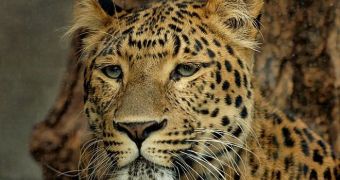Nature is a highly-diverse place, especially in the ecosystems that have been fortunate enough to escape human influence thus far. A simple trip to a thick rain forest will reveal a wealth of animals, each species sporting a specific type of coat. Fruit flies carry dots on their wings, whereas leopards carry spots, and zebra sport stripes. The reason why these animals got these funky coats has remained a mystery until now, and scientists have always wondered about the mechanisms that might be at work here, LiveScience reports.
In addition to the colors themselves, the coats animals of all shapes and sizes sport are also laden with specific patterns. Some are arranged almost mathematically, while others appear to have developed randomly, creating vast differences between individuals of the same species. But a team of researchers has recently managed to determine why a certain type of fruit fly, called Drosophila guttifera, features a number of 16 dots on its wings. This is extremely important, as the finding could in the near future help determine why spots, stripes and other patterns appear on more complex creatures.
The senior author of the new investigation, University of Wisconsin-Madison molecular biologist Sean Carroll, revealed that he and his team managed to create fruit flies that are adorned with stripes rather than spots. This was possible through the genetic manipulation of morphogens, which are basically the protein markers that dictate whether cells on the surface of the body will be instructed to create pigment in a spot or a stripe pattern. “We can make custom flies,” Carroll says. Details of the new study appear in the latest issue of the esteemed scientific publication Nature.
“For the prior six decades with respect to color pattering all sorts of schemes had been proposed but they aren't experimentally testable until you have actual molecules and knowledge of the development of the system,” the team leader states. “By tracking where this came from in other species, we can see how the complex pattern has evolved. This isn't an overnight thing where there was a patternless wing and then, boom, you've got 16 spots,” Carroll concludes.

 14 DAY TRIAL //
14 DAY TRIAL //